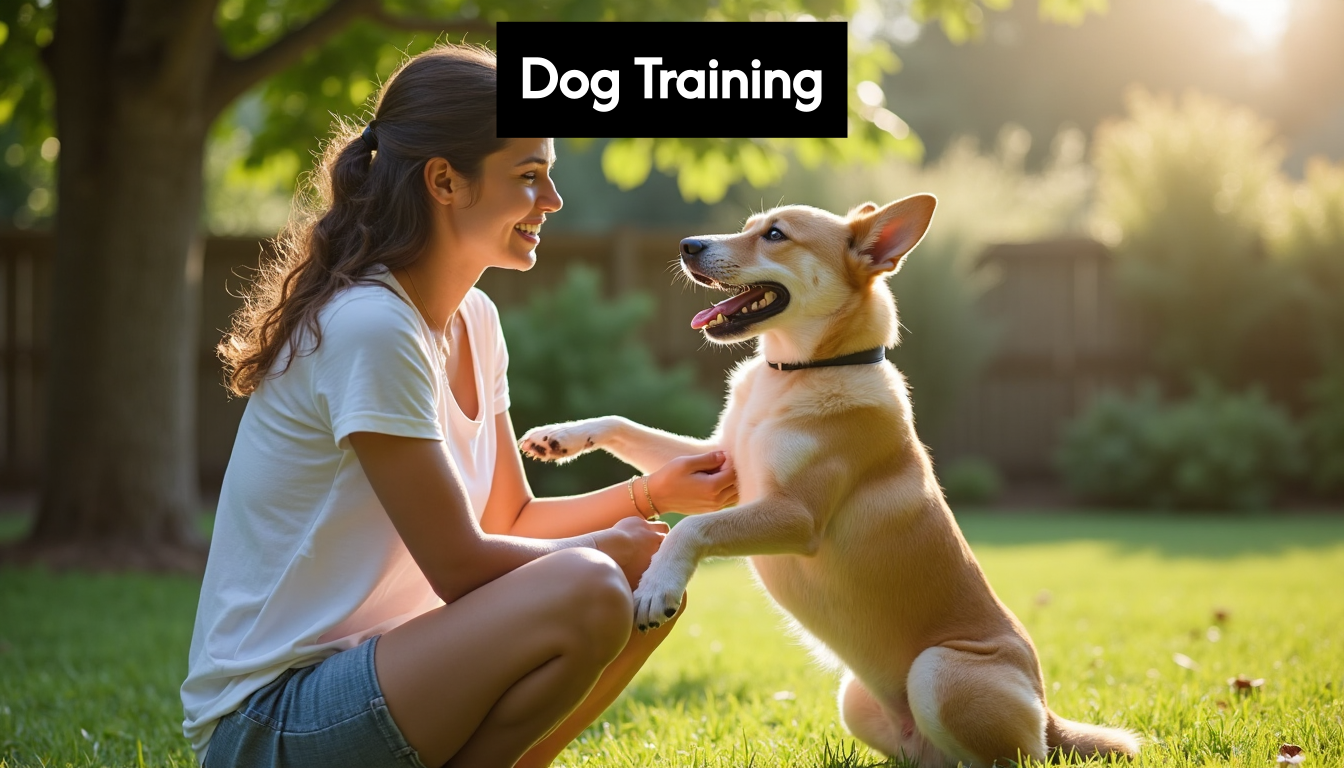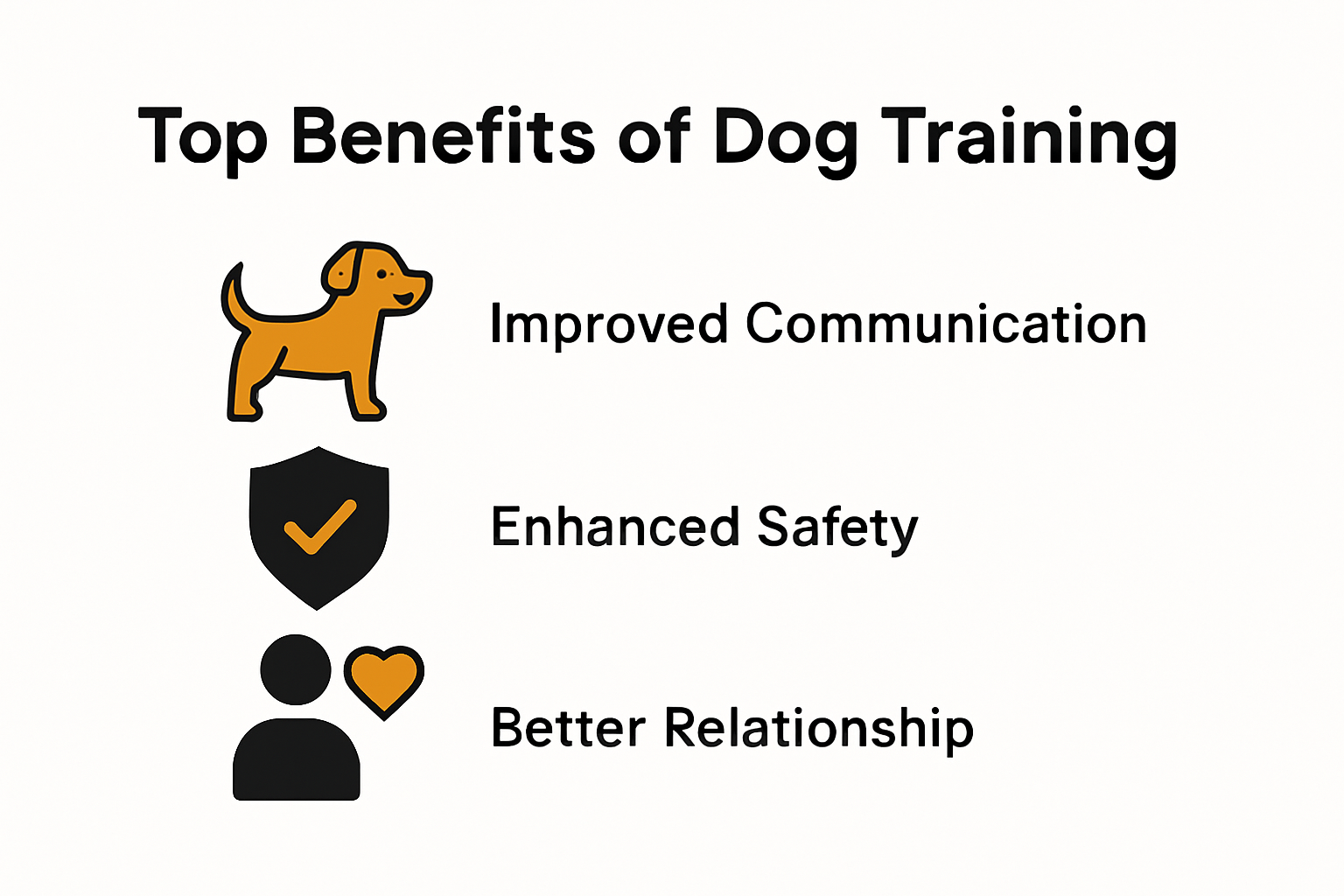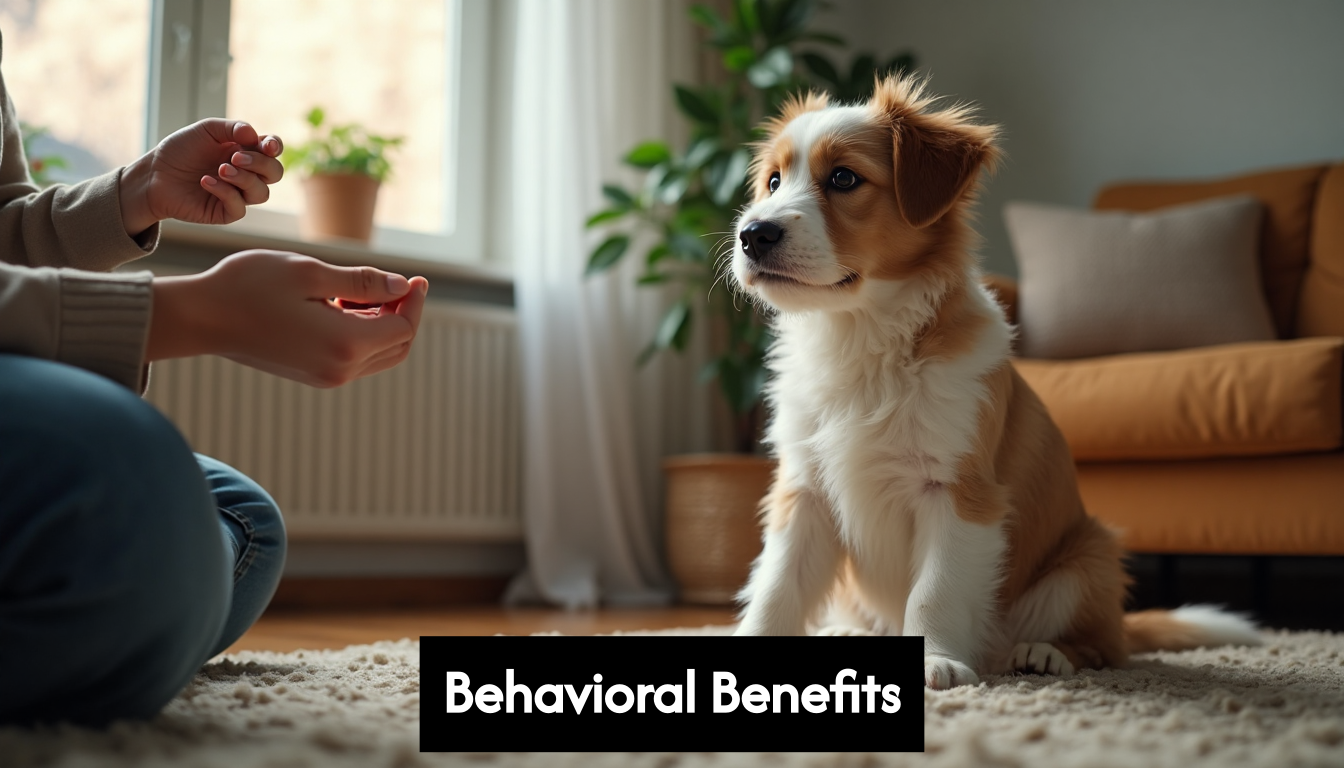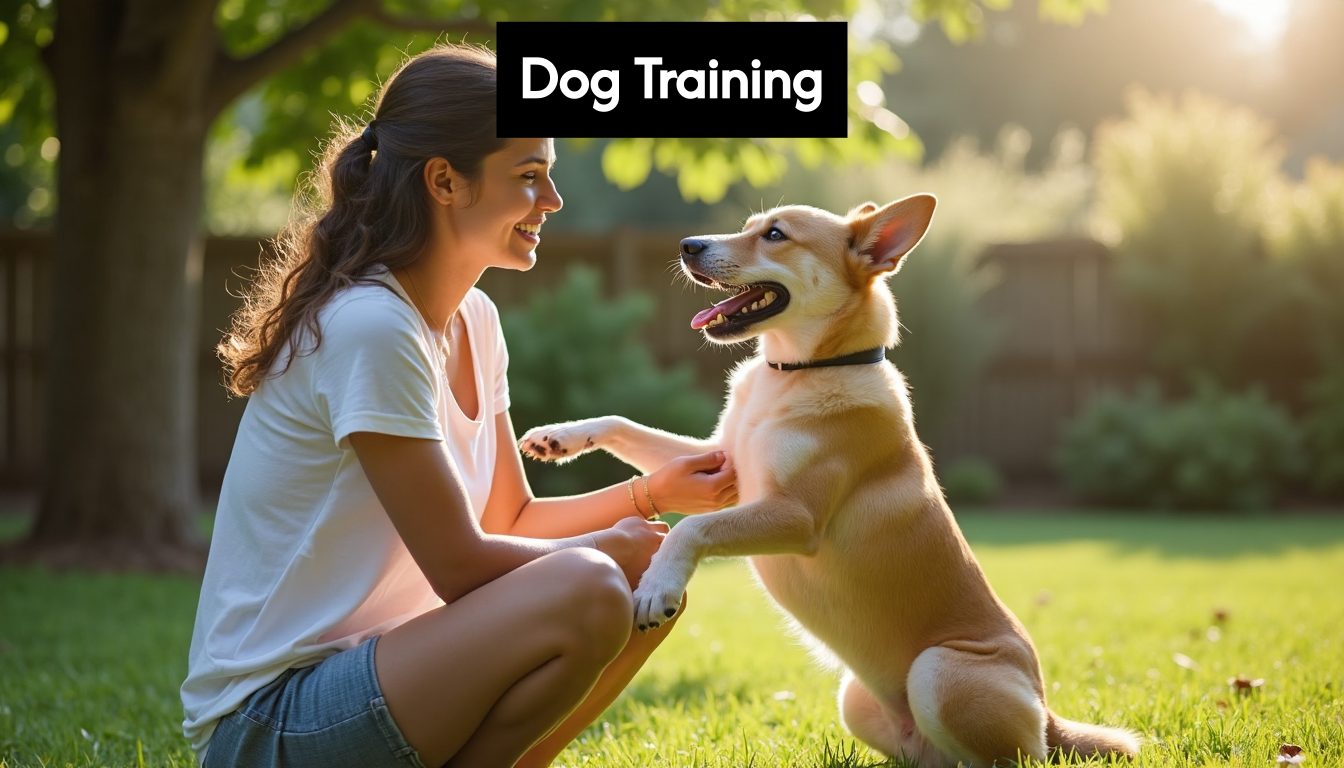
Dog training has become a must for pet owners in 2025. Here is something few expect. Over 99 percent of dogs show at least one moderate to severe behavioral problem according to a Texas A&M study. Most people assume dog training is just about obedient pets and fun tricks. In reality, it is a lot more. Dog training builds a deeper bond, improves safety and communication, and even helps dogs with mental health challenges most owners do not realize exist. This opens the door to a whole new world of possibilities for anyone with a canine companion.
Table of Contents
- How Dog Training Improves Daily Life
- Behavioral Benefits For Pets And Handlers
- Boosting Safety And Community Integration
- Unique Advantages For Special Needs And Seniors
Quick Summary
| Takeaway | Explanation |
|---|---|
| Improved Communication | Dog training establishes a shared language between pet owners and their dogs, reducing misunderstandings and enhancing daily interactions. |
| Enhanced Safety | Trained dogs respond reliably to commands, decreasing risks in potentially dangerous situations and addressing behavioral challenges proactively. |
| Long-term Relationship Benefits | Training fosters mutual trust and respect, enriching the bond between dogs and handlers for a more harmonious companionship. |
| Community Integration | Well-trained dogs contribute to safer public spaces and improve social interactions, allowing for more inclusive community experiences. |
| Support for Special Needs | Specialized training enhances the independence and quality of life for seniors and individuals with disabilities by providing crucial assistance and emotional support. |

How Dog Training Improves Daily Life
Dog training transforms more than just your pet’s behavior it revolutionizes your entire daily experience as a pet owner. By establishing clear communication and consistent routines, training becomes the foundation for a harmonious relationship between you and your furry companion.
Communication and Predictability
Effective dog training creates a shared language that goes beyond simple commands. When you invest time in training, you develop a nuanced communication system with your dog that reduces misunderstandings and frustration. Discover advanced communication techniques that can help you understand your dog’s signals and needs more effectively.
Predictability is a game changer for pet owners. A well trained dog knows what to expect during daily routines like walks, meal times, and interactions with family members. According to research from Performance K9 Training, consistent training establishes routines that help dogs feel secure and reduce anxiety.
Behavioral Management and Safety
Training is not just about teaching tricks. It is a critical safety mechanism that prevents potential hazards and reduces risky behaviors. Dogs who respond reliably to commands are less likely to run into dangerous situations like traffic or confrontations with other animals.
The benefits extend beyond physical safety. A trained dog experiences less stress and displays more predictable behavior. According to Cognitive Market Research, 73% of dog owners worldwide recognize training as essential for managing behavior and improving quality of life.
Moreover, training helps address potential behavioral issues before they become problematic. Techniques like positive reinforcement can redirect unwanted behaviors such as excessive barking, jumping, or aggression. This proactive approach not only makes your home more peaceful but also strengthens the bond between you and your pet.
Long Term Quality of Life
The impact of dog training extends far beyond immediate behavior control. It creates a foundation for a lifelong relationship built on mutual understanding and respect. Trained dogs tend to be more confident, adaptable, and socially integrated. They can accompany you to more places, interact more smoothly with other people and animals, and become true companions in every sense of the word.
By investing time in consistent, positive training methods, you are not just teaching commands. You are building a communication framework that enhances your daily life, improves your dog’s mental well being, and creates a deeper, more meaningful connection that will last for years to come.
Behavioral Benefits for Pets and Handlers
Behavioral training represents a transformative journey for both dogs and their handlers, addressing complex psychological needs and creating a more balanced relationship. Understanding the intricate dynamics of canine behavior is crucial for developing effective communication and mutual understanding.

Mental Health and Emotional Regulation
Dogs experience complex emotional landscapes that require careful navigation. Learn about advanced behavioral strategies that help manage your dog’s psychological well being. According to research from Off Leash K9 Training, structured training provides essential mental stimulation that reduces anxiety and mitigates destructive behaviors.
The psychological benefits extend beyond simple command learning. Consistent training helps dogs develop emotional resilience, teaching them how to respond calmly to stressful situations. This emotional regulation is particularly critical for rescue dogs or pets with traumatic backgrounds who might struggle with unpredictable behavioral responses.
Addressing Behavioral Challenges
Behavioral training is not about punishment but understanding. A groundbreaking Texas A&M University study revealed that over 99% of dogs exhibit at least one moderate to severe behavioral problem. This statistic underscores the importance of targeted, compassionate training approaches.
Common behavioral challenges like excessive barking, separation anxiety, aggression, and inappropriate jumping can be systematically addressed through positive reinforcement techniques. These methods focus on understanding the root causes of problematic behaviors rather than simply suppressing symptoms. By identifying triggers and providing alternative behavioral responses, handlers can help their dogs develop healthier coping mechanisms.
Long Term Relational Benefits
Training transcends mere obedience it builds a profound communication framework between dogs and handlers. The process creates mutual trust, respect, and understanding that enriches the human animal bond. As research indicates, 73% of dog owners now recognize training as an essential component of responsible pet ownership.
For handlers, the benefits are equally significant. Learning to read canine body language, understand communication signals, and respond appropriately reduces frustration and increases empathy. This skill development transforms the relationship from a simple pet ownership dynamic to a nuanced, emotionally intelligent partnership.
Ultimately, behavioral training is an investment in companionship. It helps dogs become confident, well adjusted individuals who can navigate various social environments while providing handlers with a deeper, more meaningful connection to their four legged companions. The journey of training is not about control but about creating a harmonious, supportive relationship that benefits both species.
Boosting Safety and Community Integration
Dog training goes far beyond individual pet management it plays a critical role in creating safer, more integrated communities. By developing disciplined, well behaved dogs, training becomes a powerful tool for fostering positive social interactions and reducing potential risks in public spaces.
Enhanced Public Safety Protocols
Training transforms dogs from potential liabilities into responsible community members. Explore comprehensive safety training techniques that help dogs navigate complex social environments with confidence and control. According to Grand View Research, the global focus on obedience training reflects a growing recognition of its importance in public safety management.
Well trained dogs demonstrate remarkable ability to remain calm in diverse scenarios. They learn critical skills like maintaining composure around strangers, avoiding aggressive responses, and following commands even in distracting environments. These capabilities significantly reduce the likelihood of unpredictable behaviors that could potentially endanger other people or animals.
Social Integration and Community Interaction
Training enables dogs to become active, positive participants in community life. According to WiFi Talents research, 89% of dog owners believe training substantially improves their pets behavioral interactions. This improvement translates into more inclusive social experiences for both dogs and their handlers.
Public spaces become more accessible when dogs exhibit reliable behavior. Parks, outdoor cafes, community events, and walking paths become shared environments where well trained dogs can interact harmoniously with other pets and people. Training teaches dogs to respect boundaries, respond to verbal and non verbal cues, and maintain appropriate social distance.
Professional and Specialized Integration
Beyond general social interactions, training prepares dogs for specialized roles that directly contribute to community safety and support. Service dogs, therapy animals, and working dogs rely on rigorous training to perform critical functions in healthcare, emergency response, and support services.
For individuals with disabilities or specific support needs, a well trained dog is not just a pet but a crucial companion that enhances independence and safety. Training enables these dogs to navigate complex environments, assist with mobility, provide emotional support, and respond to potential medical emergencies with precision and reliability.
Community integration through dog training represents a holistic approach to social responsibility. It acknowledges that responsible pet ownership extends beyond individual households. By investing in comprehensive training, dog owners contribute to creating safer, more understanding, and more inclusive public spaces where both humans and animals can coexist harmoniously.
Ultimately, training is an investment in mutual respect. It transforms dogs from potential sources of concern into valuable, trusted members of the broader community ecosystem.
Unique Advantages for Special Needs and Seniors
Dog training takes on a profoundly transformative role when tailored for special needs individuals and seniors, offering far more than traditional companionship. These specialized training approaches create powerful support systems that enhance independence, safety, and quality of life for vulnerable populations.
Mobility and Independence Support
Discover specialized service dog training techniques that can dramatically improve daily functioning for individuals with disabilities. According to UD Services, trained service dogs provide critical assistance that enables seniors and people with special needs to maintain greater independence and mobility.
For seniors experiencing reduced physical capabilities, a well trained dog becomes more than a pet it becomes a vital support system. These dogs can assist with walking, retrieving items, opening doors, and providing physical stability. The training process focuses on developing precise skills that directly address specific mobility challenges, transforming potential limitations into opportunities for enhanced personal autonomy.
Health and Wellness Enhancement
Beyond physical assistance, trained dogs offer significant health benefits for seniors and individuals with special needs. Research from A Place for Mom highlights how service dogs help manage various disabilities including hearing, vision, mobility, and cognitive challenges.
The presence of a trained dog encourages physical activity and social interaction. Caring for and exercising the dog becomes a therapeutic routine that promotes better circulation, muscle strength, and overall physical health. For seniors who might struggle with isolation, these dogs provide consistent companionship and motivation to remain active and engaged with the world around them.
Emotional and Psychological Support
Training for special needs and senior support dogs goes beyond physical skills. These remarkable animals are trained to provide nuanced emotional support, recognizing and responding to psychological signals that might indicate distress, anxiety, or medical emergencies.
For individuals with conditions like dementia, autism, or chronic anxiety, a trained dog can offer calming interventions, interrupt potentially harmful behaviors, and provide a consistent source of emotional regulation. They learn to recognize specific medical signals such as impending seizures, blood sugar changes, or panic attacks, offering a level of support that extends far beyond traditional pet interactions.
The training process for these specialized dogs is intensive and compassionate. It requires understanding the unique needs of each individual, developing a customized approach that transforms the dog into a highly attuned, responsive companion. This isn’t just training it is a carefully crafted partnership designed to maximize human potential and quality of life.
Ultimately, for seniors and individuals with special needs, a well trained dog represents more than assistance. It embodies independence, dignity, and a profound connection that supports physical, emotional, and psychological well being. The investment in specialized training creates a relationship that empowers, protects, and enriches lives in ways traditional support systems cannot match.
Frequently Asked Questions
What are the main benefits of dog training for pet owners in 2025?
Dog training in 2025 enhances communication, improves safety, fosters long-term relationships between pets and owners, and supports community integration. Trained dogs are less likely to exhibit behavioral problems, making them more enjoyable companions.
How does dog training improve a dog’s mental health?
Training provides essential mental stimulation, helps reduce anxiety, and teaches emotional regulation, which can significantly enhance a dog’s overall well-being and reduce potential behavioral issues.
Why is safety a key reason for dog training?
Safety is crucial because well-trained dogs are less likely to engage in dangerous behaviors, such as running into traffic or being aggressive toward other animals or people. Reliable obedience to commands increases safety for both the pet and the owner.
Can dog training help seniors and individuals with special needs?
Yes, specialized dog training can provide critical assistance to seniors and individuals with disabilities by enhancing mobility, offering physical support, and delivering emotional companionship, thus improving their overall quality of life.
Transform Your Dog’s Training Into Real-Life Safety and Communication
Struggling with unexpected behavioral challenges or communication barriers with your dog? You read just how essential clear signals and predictable routines are for building trust and boosting safety. But many owners still worry their dogs cannot alert them when things go wrong or when help is needed. That gap can leave you feeling anxious, especially if you live alone or care for a senior or special needs family member.

Imagine a world where your dog can press a button to tell you what they need or alert you in urgent situations. The iPupPee device brings the benefits of positive training and communication together, helping you achieve peace of mind and a deeper bond with your pet. Ready to bridge the gap between safety and understanding? Visit ipuppee.com to see real customer stories, get simple training tips, and find out how easy it is to make your home safer and happier for both you and your dog. Bring your dog’s voice into your daily life—experience the difference today.

